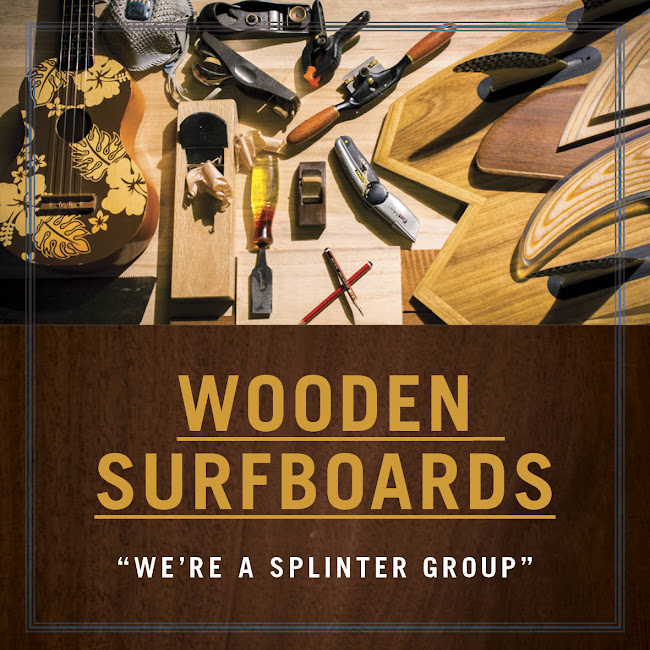This surfboard that Micheal Connor has constructed
is made from Paulownia with inlay strips of Red Cedar. It now hangs in
the Lennox Head Cultural and Community Centre. Building surfboards has
a lot in common with making other styles of watercraft. Like boats, surfboard
designs vary enormously. The quest for the perfect ride has created surfboards
of all different lengths and shapes. There is constant experimentation
with a variation of materials and finishes. It depends very much on the
individual designer and what kind of surfing experience they are trying
to deliver their customer.
As his brand ‘Bush Pig’ suggests, Micheal Connor chooses to make a style of Malibu surfboard known as a ‘Pig’. This style of board was developed in the 1960s by a highly regarded surfer and board maker named Dale Velzy. It was originally made of Balsa wood. It had a long elegant shape with a square tail and has quite a following amongst collectors of old Malibu boards.
As his brand ‘Bush Pig’ suggests, Micheal Connor chooses to make a style of Malibu surfboard known as a ‘Pig’. This style of board was developed in the 1960s by a highly regarded surfer and board maker named Dale Velzy. It was originally made of Balsa wood. It had a long elegant shape with a square tail and has quite a following amongst collectors of old Malibu boards.
The core of the board is made up of a frame consisting of Paulownia strips
that interlock together to form an inner frame, the contours of which
determine the shape of the board. These frame components are cut using
a CNC machine and are cut from a single 7mm Paulownia panel.
The holes in the frame are to make it one connected air
camber to allow the whole board to release it's pressure if it gets hot.
Where needed, foam is added.
The glued frame is covered with a 5-8mm skin of Paulownia.
Mike glues up a thick panel with a Red Cedar strip and cuts it up the
middle on his large Wadkin bandsaw. This gives him a book-matched panel
with converging Red Cedar stringers that will give the board a subtle
but effective detail. The thickness of this deck, depends on the target
weight of the design. The skin is glued to the frame using a vacuum bag.
Once the bag is removed, the surface is hand planed using a smoothing
plane and then fine sanded.
The sides are also planed so they are square, then several
thin strips are machined to be laminated around the curved edges of the
board.
Once the nose and tail is glued on, Micheal creates the
beautiful rounded curves that will feature in the finished surfboard using
his custom made block plane.
The fin is a work of art in itself and feature the same converging Red Cedar lines as the board.
The fin is a work of art in itself and feature the same converging Red Cedar lines as the board.

































No comments:
Post a Comment